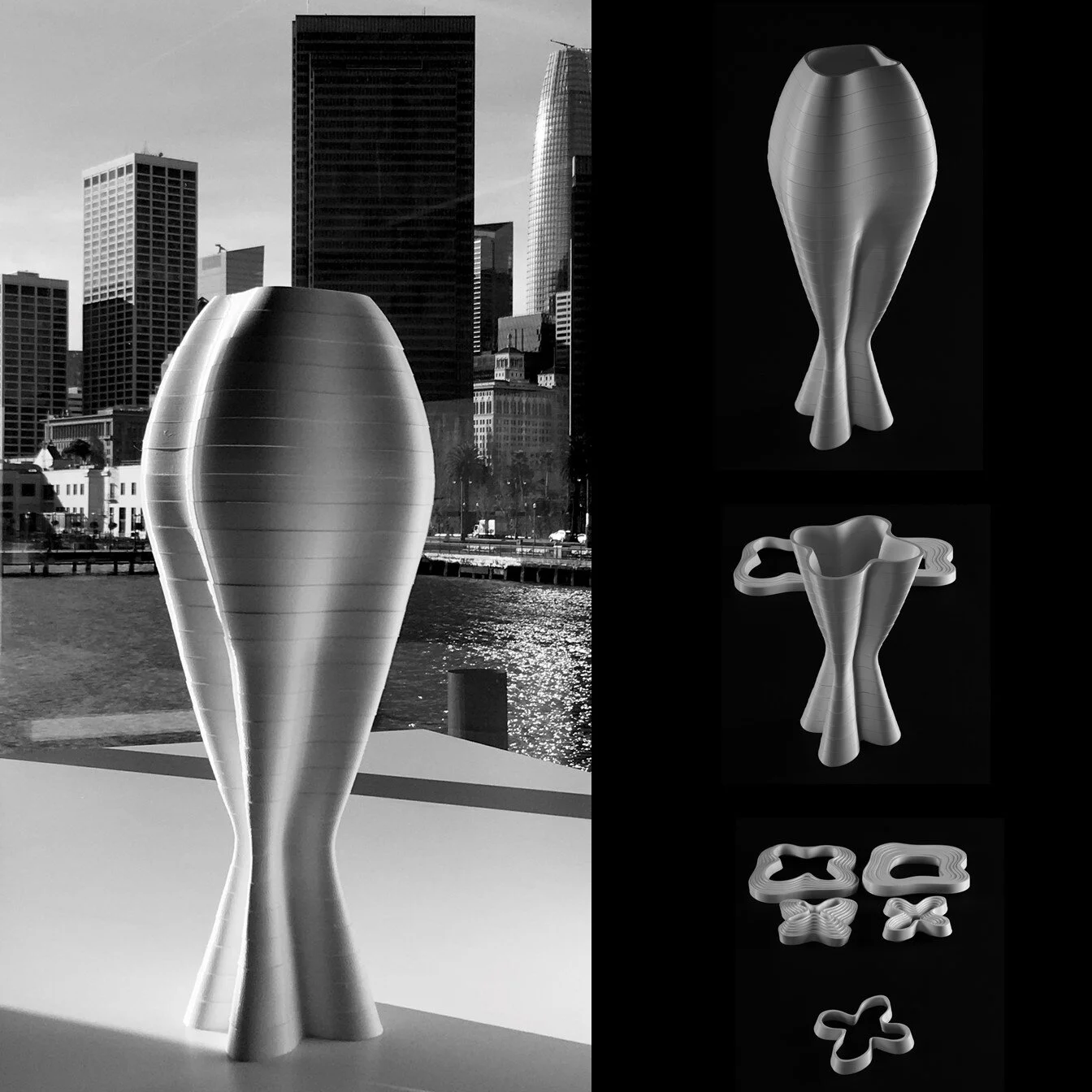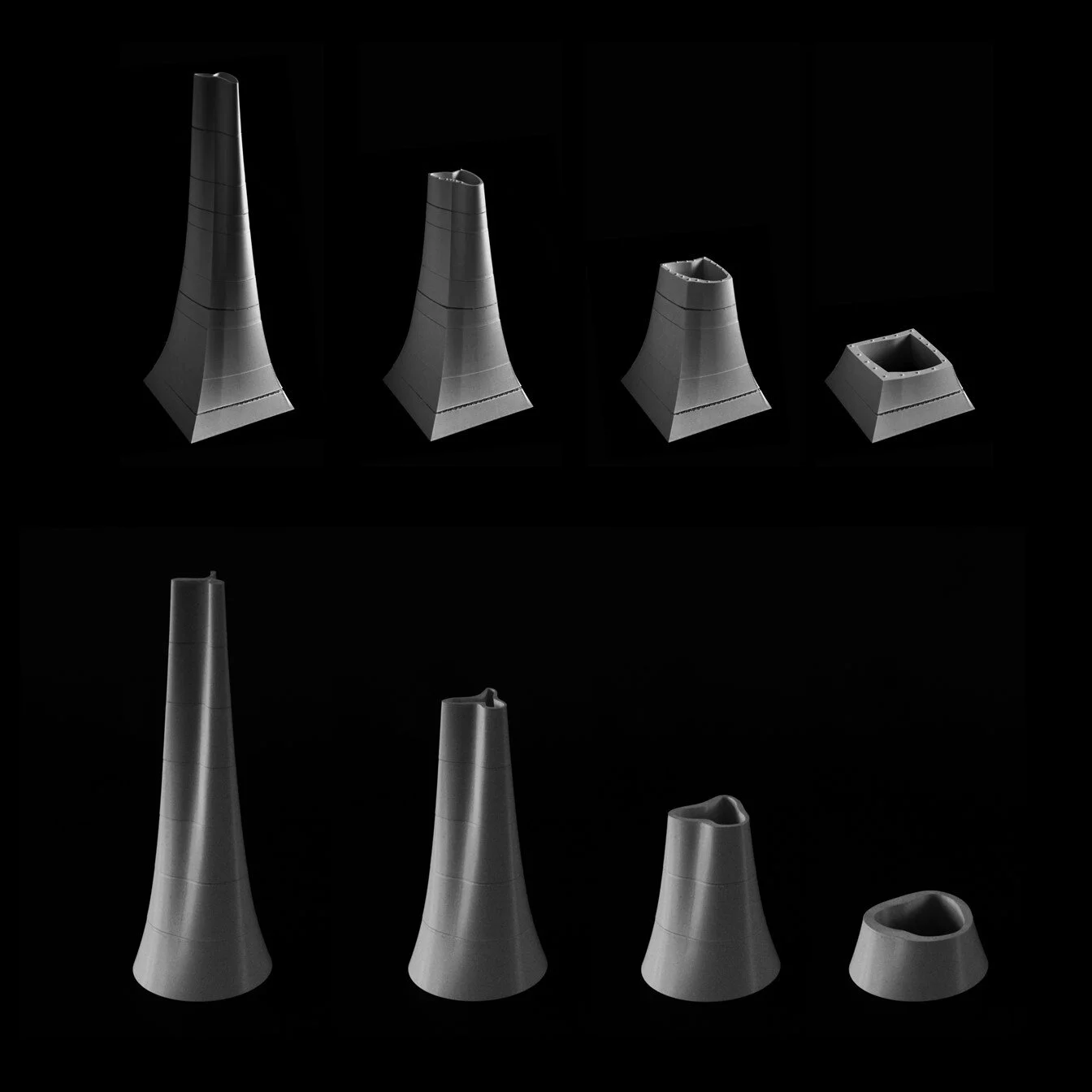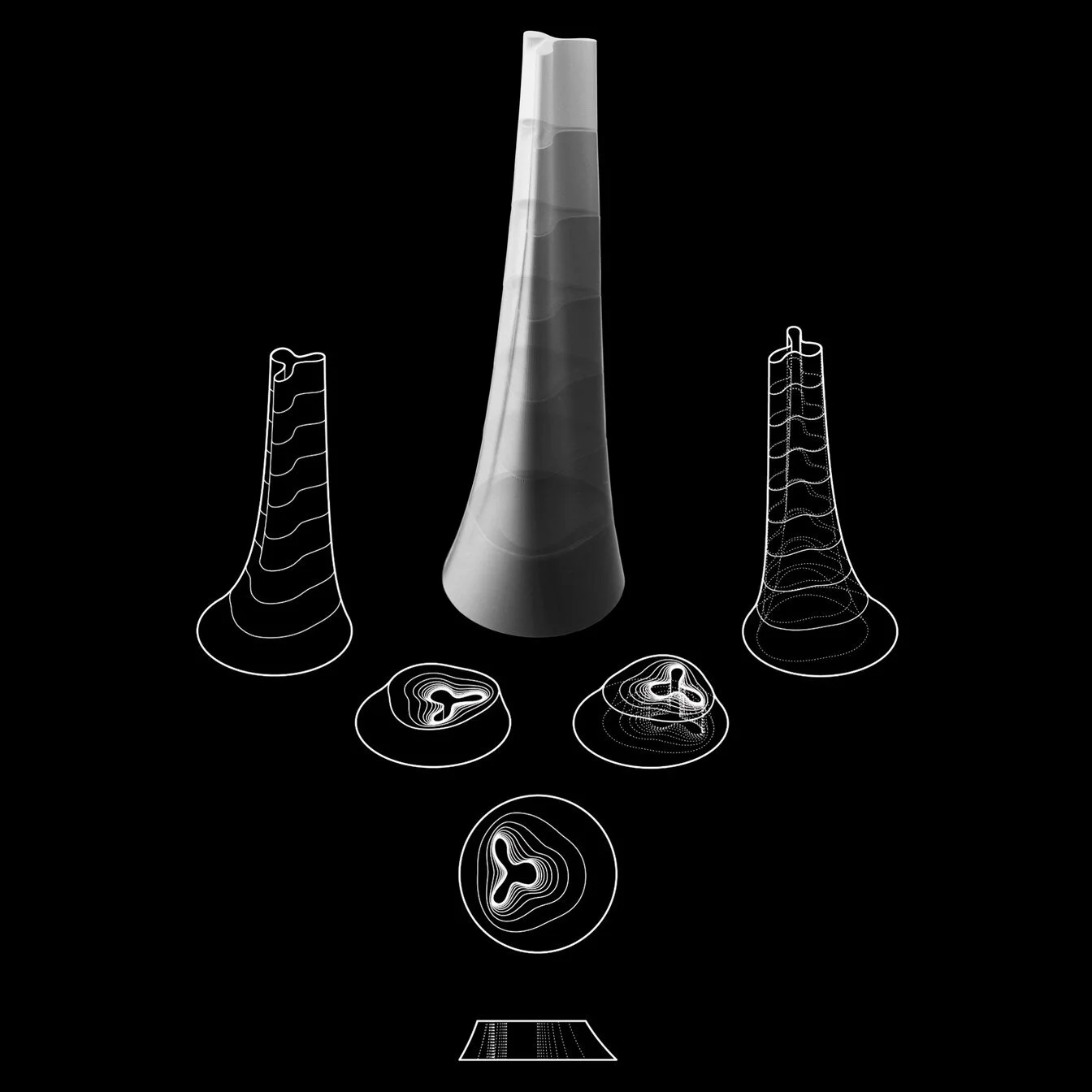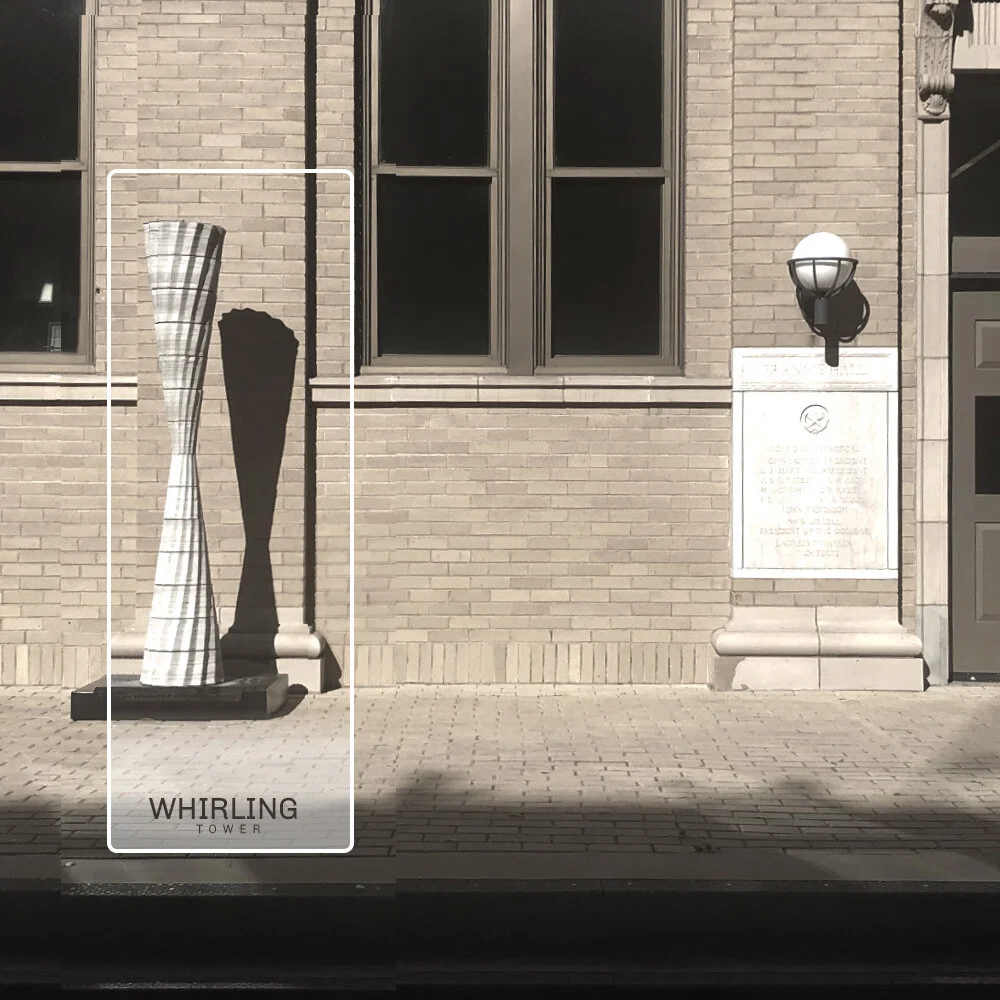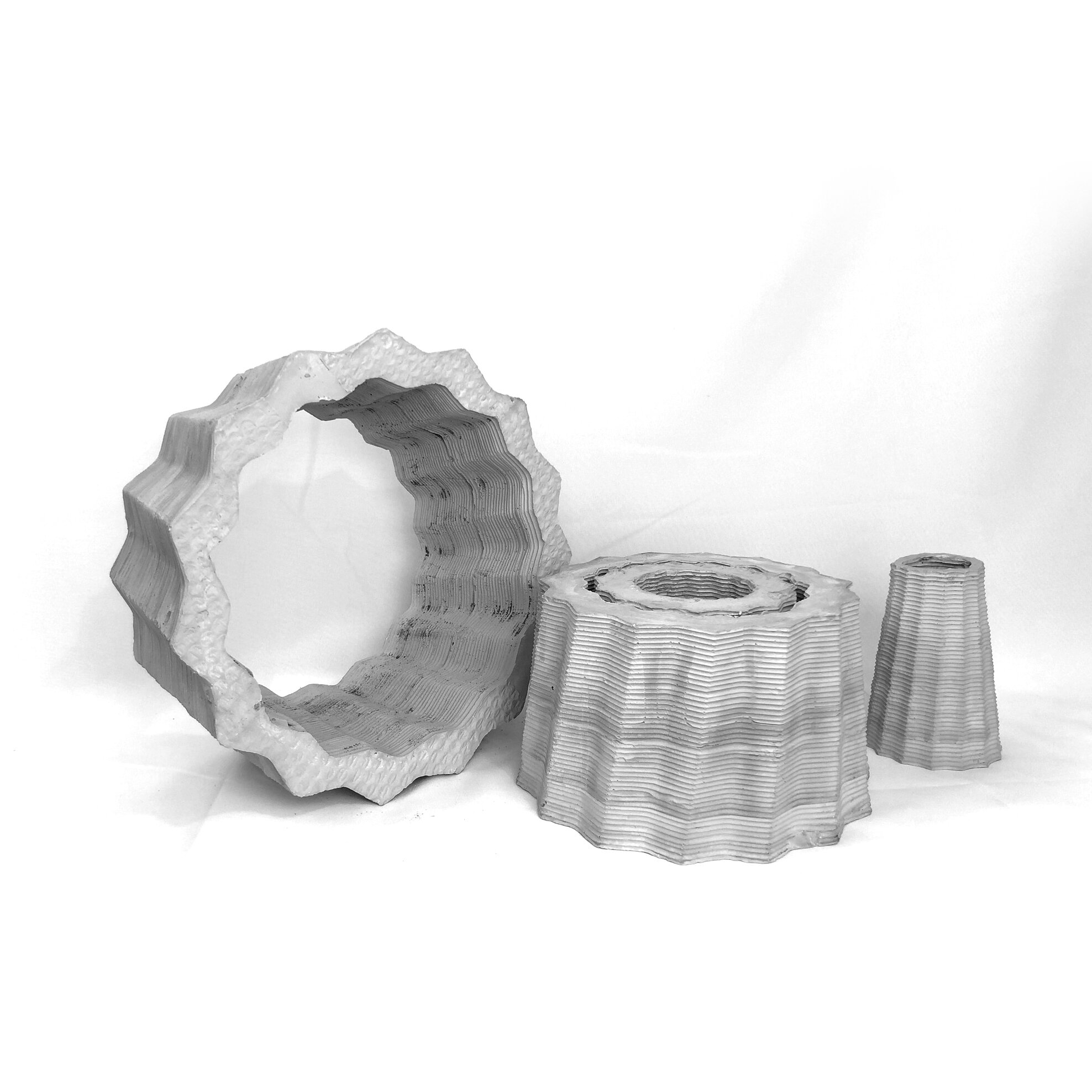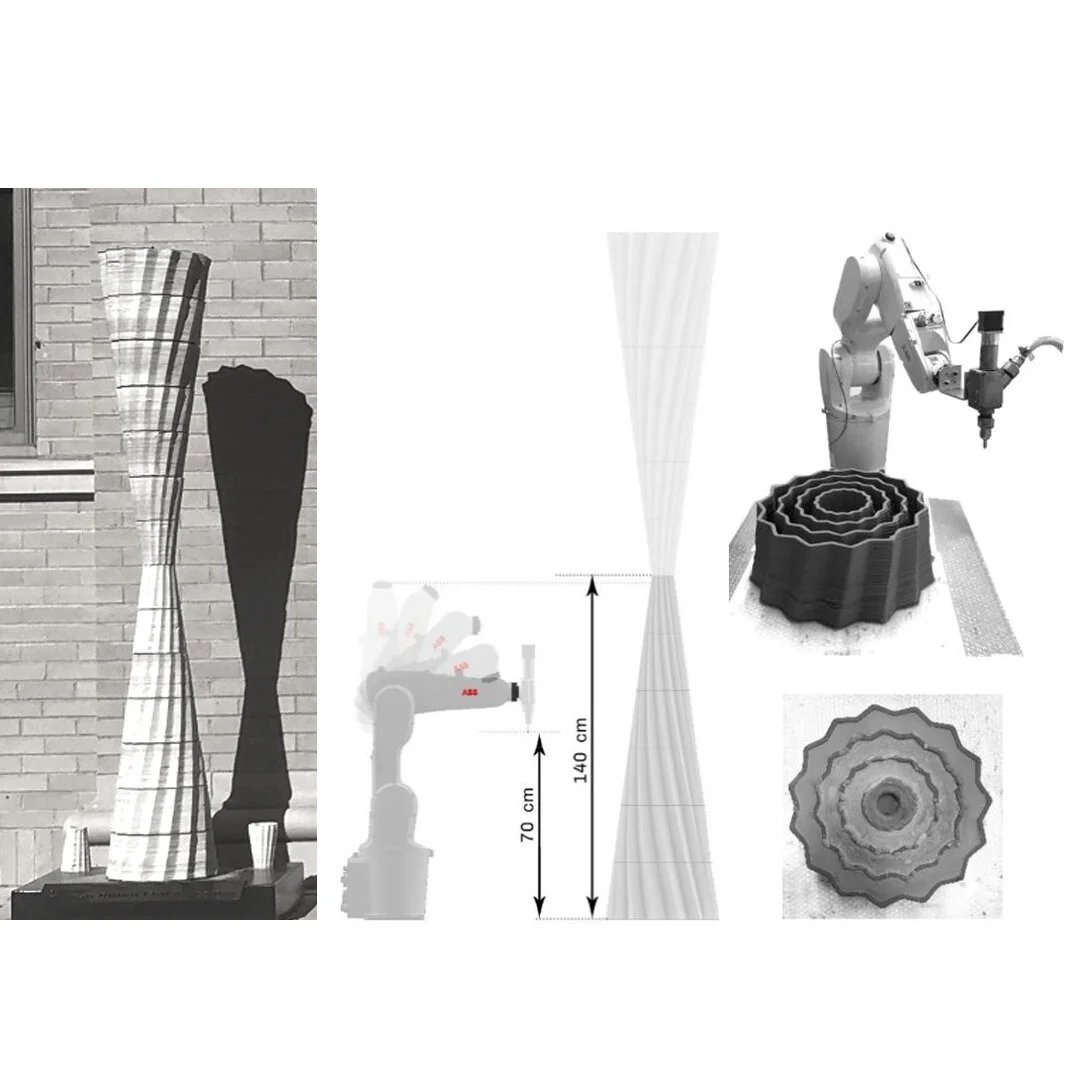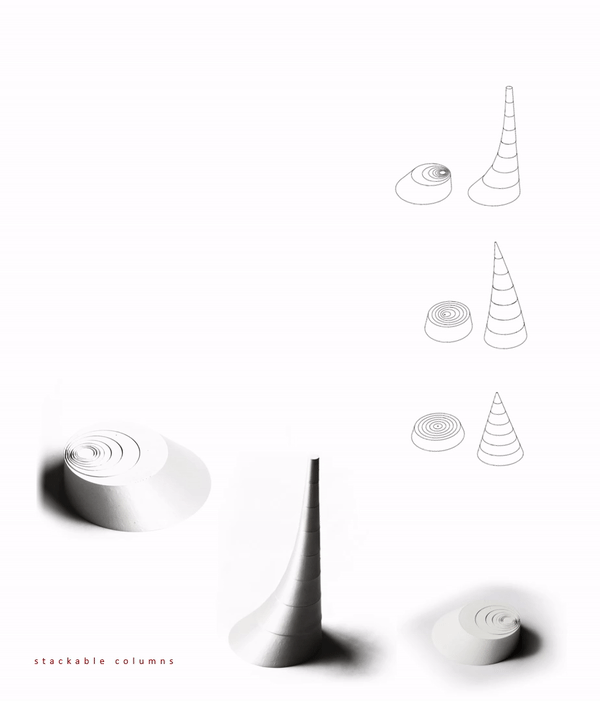Based on the notion of the intelligence embedded in tools and materials, this workshop will introduce nesting fabrication in architectural applications. In particular, the workshop will help participants to expand their tectonic proficiencies in developing the design principles for 2.5D nested robotic 3D printing. Emerging from the constraints of existing paste-extrusion printers, the participants will explore the main parameters involved in dividing the global geometry of a complex volume into stackable components when congruent surfaces are attained between them. By converting different formal, material, and technical restrictions into geometric constraints, the stacked components are divided in a way that the first component gives shape to the second.
The workshop is broken into two days, starting with introducing related material, processes, and current state of the art in robotic 3D printing processes. Following this contextualization, the workshop will discuss the process and material parameters for use during the robotic deposition of clay-based materials including a demonstration of digital and physical workflows for robotic clay printing. The workshop attendees engage in a design exercise that links computational design to robotic deposition processes which will be simulated in a virtual robotic fabrication environment. The participants will explore the possibility of nesting a tower-like structure to design an engineered biome named cityTREE while using the principles of 2.5D nesting in robotic clay printing.
PRINT in PRINT: Nesting Robotic 3D printing, a two-day workshop will be organized by Negar Kalantar, co-director of Digital Craft Lab, Al Borhani and Mehdi FarahBakhsh. This workshop is part of the DigitalFutures Event.

